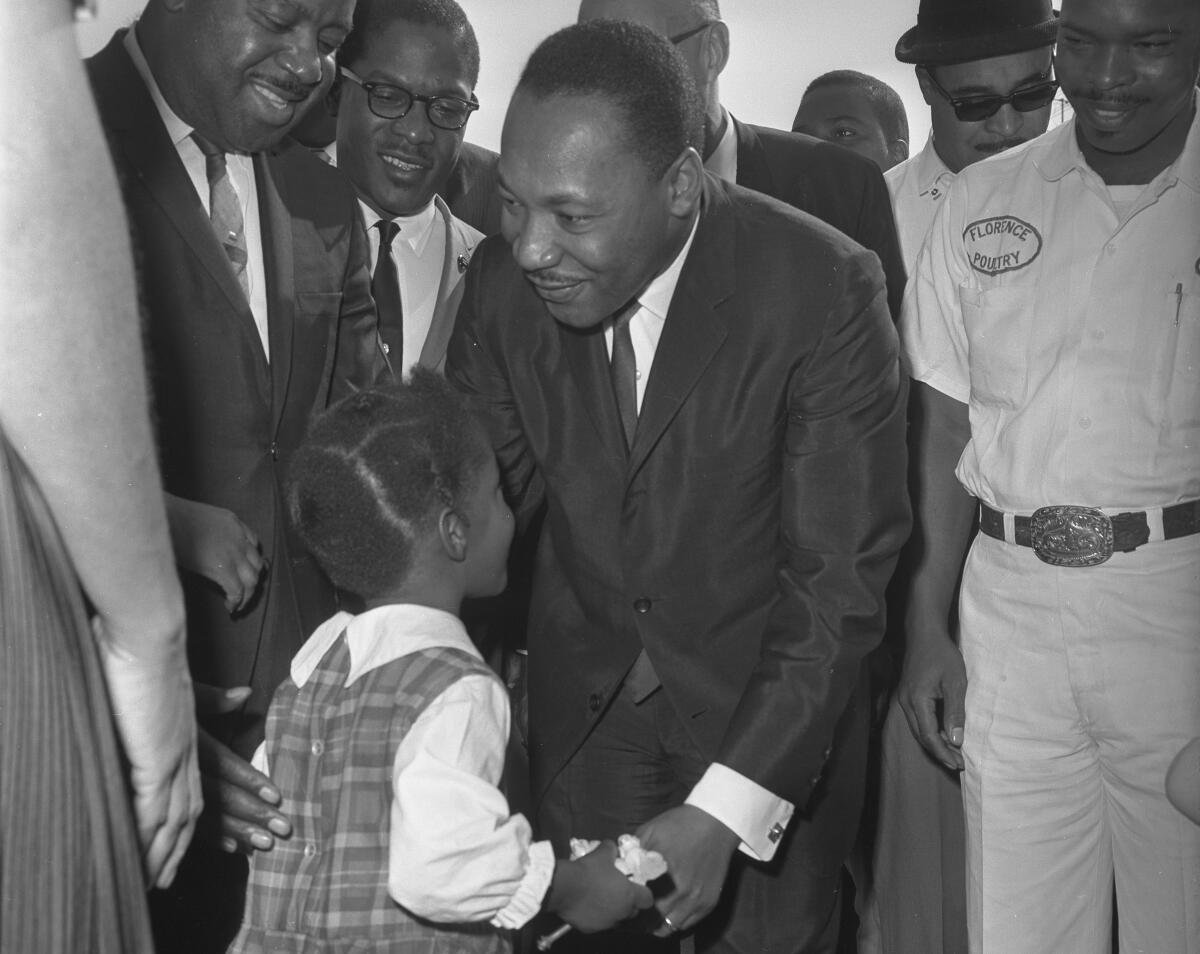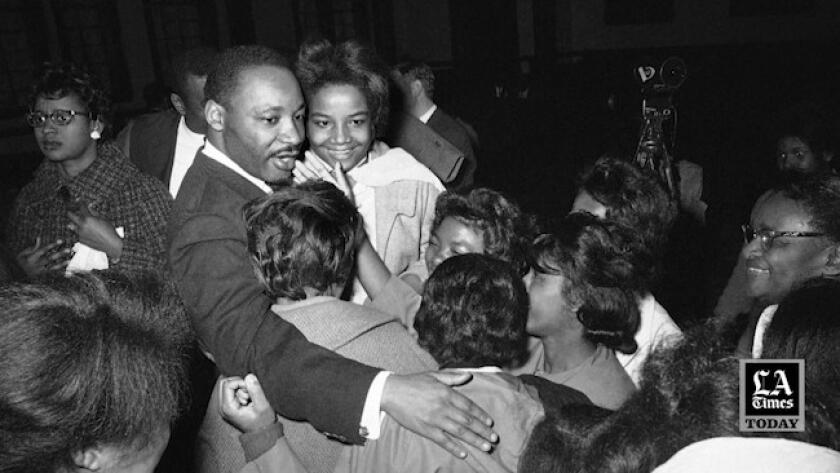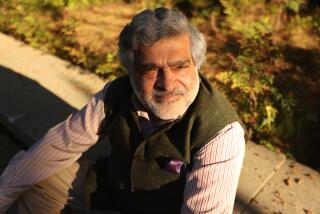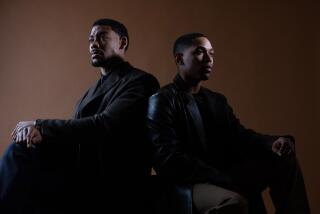Column: What Martin Luther King taught me about ‘good hair’ and Black pride

Every January, as I read and listen to the tributes to Martin Luther King Jr., I think not only about what Dr. King gave the world, but also about what he gave me personally.
On his 1963 visit to Cleveland, Dr. King spoke from the back of a flatbed truck at a park not far from our neighborhood. My mother, who’d grown up in Alabama during the reign of Jim Crow, took me, then 9 years old, with her to see her hero.
She made sure to arrive early enough to claim a space near the front of the crowd. And when Dr. King leaned down to shake hands, my mother lifted me up and thrust me forward, thrilled to see the civil rights icon clasping her daughter’s small, outstretched hand. My mother was rapturous. I was too young to understand the hullabaloo, but I felt for a moment as if I had encountered a deity.
Honestly, I don’t remember much of what Dr. King said. His lilting cadence captivated me, but I was too young and ignorant of history then for the full measure of his message to sink in.
But there was one line he spoke that stopped me in my tracks; a rousing declaration that’s unlikely to show up in the holiday tributes, but that still speaks volumes to me:
I don’t care what anyone says, I have good hair!
His delivery was emphatic, and the crowd roared with laughter. I stood there totally confused, studying his head. His close-cropped hair looked to me like a patch of tightly coiled black beads, shiny with sweat.
I thought I knew what “good hair” meant. It was a comment often directed my way, as in “You’re so lucky to have good hair.” But his hair was nothing like mine.
“Good hair” in our vernacular then meant it didn’t require a hot comb. My curls were frizzy, and I mostly hated them, as many young Black girls did back in the day, but they were loose enough that I could wear my hair in ponytails that bounced. This was something other Black folks seemed to care about.
Still, I understood even then the implications of the “good hair” label. It accepted “white hair” as the standard by which all hair should be judged. The closer to white your facial features, skin color and hair texture were judged to be, the higher you were in the Negro hierarchy.
Yet here was this dark-skinned, kinky-haired man insisting that his hair was “good.” Was my hair still good? Was it going to wind up like his one day? I was curious about what he meant, but more than that, I was stirred by his boldness, his self-respect.
As I tuned in to his speech, a curtain in my mind began to lift. He talked about justice and sacrifice; about the resilience of our people and the dignity of our demands; about our connection to one another.
His hair began to look beautiful to me. And so did all the hair of the hundreds of people surrounding us.
I realized Dr. King was not commenting on the quality or texture of his hair. His hair was good because it was his hair; it was a Black man’s hair, and its worth didn’t rest on some arbitrary standard dictated by people who didn’t value him.
That was when it dawned on me that I was part of something bigger than my family. I was connected to all these people by a history that both shaped our strengths and seeded our physical differences.
It may seem like a small thing now, but his declaration was revolutionary to me then — in an era when calling someone Black was an insult. We had all been socialized to value straight hair and light skin.
It would be years before “Black” ceased to be offensive and became our chosen descriptor; a signifier of unity. And, in my life, that will always be a part of Dr. King’s legacy.
Watch L.A. Times Today at 7 p.m. on Spectrum News 1 on Channel 1 or live stream on the Spectrum News App. Palos Verdes Peninsula and Orange County viewers can watch on Cox Systems on channel 99.
More to Read
Sign up for Essential California
The most important California stories and recommendations in your inbox every morning.
You may occasionally receive promotional content from the Los Angeles Times.












